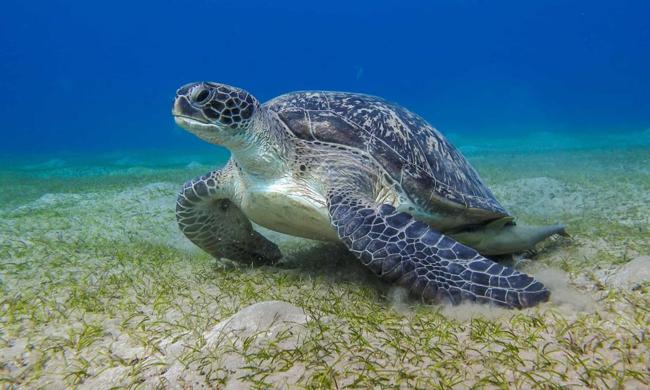Summary
Sea turtles are fascinating creatures of the ocean. Theyre very famous for their mass egg hatchings on beaches, so its easy to overlook something as simple as their diet. Check out this video by National Geographic of a sea turtle eating a jellyfish like spaghetti!
Source: AOL

AI News Q&A (Free Content)
Q1: How do leatherback sea turtles eat jellyfish without getting stung?
A1: Leatherback sea turtles have specialized adaptations that allow them to eat jellyfish without being harmed by their stinging cells. Their throats are lined with backward-pointing spines called papillae, which facilitate the swallowing of jellyfish by preventing them from coming back up once ingested. This anatomical feature ensures that the jellyfish are pushed further down the digestive tract, minimizing the risk of stings.
Q2: What is the primary diet of leatherback sea turtles, and how does it affect jellyfish populations?
A2: Leatherback sea turtles primarily feed on jellyfish, consuming large quantities to sustain their massive size. This specialized feeding habit plays a crucial role in regulating jellyfish populations, which can otherwise grow unchecked and impact marine ecosystems negatively. By preying heavily on jellyfish, leatherbacks help maintain ecological balance in their habitats.
Q3: What surprising findings about sea turtles' jellyfish consumption were revealed in recent research?
A3: Recent research has discovered that leatherback sea turtles may have selective preferences for jellyfish based on color and texture, which may influence their foraging behavior and increase the likelihood of ingesting plastic debris mimicking natural prey. This suggests that visually distinctive items, such as yellow plastics, may inadvertently attract them, highlighting a need for mitigating plastic pollution impacts.
Q4: Why are leatherback sea turtles considered vulnerable, and what conservation efforts are in place to protect them?
A4: Leatherback sea turtles are considered vulnerable due to threats like habitat destruction, climate change, and bycatch in fishing gear. Conservation efforts include international agreements like CITES and the Convention on Biological Diversity, as well as initiatives by organizations such as the World Wildlife Fund to protect their habitats and reduce human impact.
Q5: How do leatherback sea turtles contribute to marine biodiversity?
A5: Leatherback sea turtles contribute to marine biodiversity by regulating jellyfish populations, which helps prevent jellyfish blooms that can disrupt marine ecosystems. Their feeding habits play a pivotal role in maintaining ecological balance, supporting the health of marine environments and the diverse species that inhabit them.
Q6: What are the unique features of leatherback sea turtles that distinguish them from other sea turtle species?
A6: Leatherback sea turtles are distinguished by their lack of a bony shell, instead having a carapace covered with oily flesh and flexible, leather-like skin. They are the largest and heaviest of all living turtles, capable of reaching lengths up to 2.7 meters and weights of up to 500 kilograms. These unique features set them apart as the only species in their family, Dermochelyidae.
Q7: How do jellyfish protect themselves from predators, and what adaptations do they have for survival?
A7: Jellyfish protect themselves using their stinging cells, found on their tentacles, which can deter predators by delivering painful stings. They also exhibit a complex life cycle with both sexual and asexual phases, allowing them to reproduce and thrive in various marine environments. These adaptations have enabled jellyfish to persist for over 500 million years, making them one of the oldest animal groups.
References:
- Leatherback sea turtle
- Jellyfish
- Experimental study on color and texture as cues for plastic debris ingestion by captive sea turtles.
- Health and nutrition of loggerhead sea turtles (Caretta caretta) in the southeastern United States.





